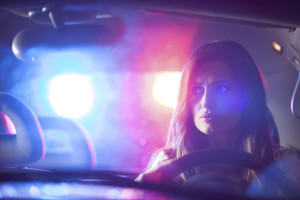 This week’s column topic was inspired by two beautiful women in my life.
This week’s column topic was inspired by two beautiful women in my life.
One is a good friend and the other a client.
I was chatting the other day with my friend, who I will anonymously refer to as Bess. Our conversation topic turned to describing, to each other, motor vehicle collisions each of us had ever been involved in.
Neither of us, thankfully, have ever been injured in a crash.
Bess, thinking back over her driving history, listed off a handful of minor collisions between the back of her car and inanimate objects such as retaining walls and poles.
I made some comment about how important it is to be careful when backing a vehicle, and she reassured me that she is very careful.
I pointed out the obvious, at least to me, that whatever level of care she might have, it is clearly not high enough!
As it turns out, the last of the series of reversing mishaps occurred approximately five years ago. Coincidentally, that is when her eldest child began becoming mobile.
The Motor Vehicle Act, section 193 to be specific, prohibits causing a vehicle to move backwards unless the movement can be made in safety.
In my view, however, a prohibition in the Motor Vehicle Act is of little consequence.
More importantly, we owe a duty to those we share streets, sidewalks and driveways with, to take reasonable care in our operation of motor vehicles.
That duty is both a legal and a moral one. In the legal context, failure to meet that duty is called negligence. The moral end of it is self-evident. It shouldn’t make any difference whether or not there is a police officer standing by with a ticket book, which is when the Motor Vehicle Act comes into play.
Backing into inanimate objects is not terribly problematic. Poles and retaining walls are remarkably resilient and bumpers are repairable.
The problem comes when the victim of a lack of reversing care is a pedestrian, bicyclist, skate boarder, roller blader or “wheeler”.
That brings me to the other beautiful woman in my life I had referred to. This lady, young at heart, suffered a serious injury when a car backed into her wheelchair as she was wheeling down a Kelowna sidewalk.
The law of negligence imposes an extra high duty on motorists to take care not to run into people. There is one level of care owed to other motorists and a higher level of care owed to those not protected by air bags, steel bars and beams, and seatbelts. Essentially, the extra high duty comes about because a motorist’s carelessness is fraught with a much greater risk of harm when it comes to pedestrians and the like.
The bottom line is that there is absolutely no excuse for anyone, ever, to be injured by a reversing vehicle. If you are not absolutely, 100% certain about what is going on behind your vehicle, you should do whatever it takes to achieve that certainty or simply not proceed.
Mirrors and back-up cameras are not sufficient. They provide restrictive fields of view. They won’t alert you to the bicyclist or jogger coming from the side.
Take the time to go to the back of your vehicle to look for possible hazards before beginning to reverse. Move slowly. If you need to get out and take another look, please do so.
Bess, please forgive me for taking liberty with our friendship, and for taking literary license with our discussion. Is that an empty apology(?)
Published August 4, 2011 in the Kelowna Capital News

0 Comments